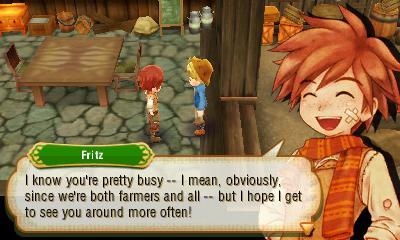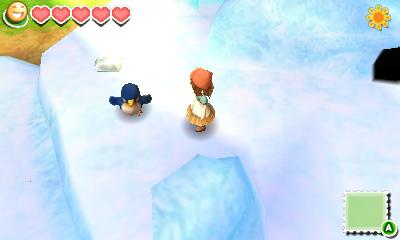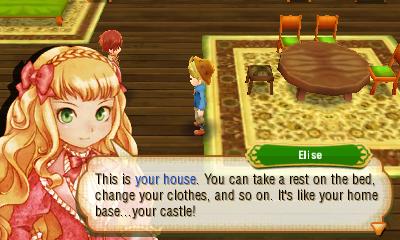
Story of Seasons Hands-On
Not too long ago, XSEED announced that they would be publishing the latest Harvest Moon game that was brought out earlier this year for the Nintendo 3DS. Due to the fact that Natsume holds the rights to the name "Harvest Moon", the company couldn't use the name, hence the title Story of Seasons, which happens to be more in line with the original title for the series, Bokujou Monogatari, which translates out to Farm Story.
At this year's E3, I got a chance to go hands-on with the newest entry in the series. I have not spent much time with these games since the original Harvest Moon for the Super Nintendo and only dabbled a little with the N64 version, so this felt like a new experience in many respects.

The big focus on Story of Seasons is the social aspect. Aside from the main character, there are three other farmers that you will be able to interact with, visiting their farms and taking a look inside their homes. Players will be able to go to other people's farms through WiFi and see what they are doing and what they are growing.
You can even help them grow their crops, but the man I was with was quick to point out that you won't be able to destroy or steal crops. Foiled again!
Another feature of this connectivity is the ability to create your own Safari using the animals you have purchased, gathered, and raised. The more animals you have inside of this wildlife cage, the more popular it will become. In the demo, I got to see an icy region where penguins were waddling around and sliding across the screen on their cute bellies. There will of course be different climatic regions to house your pets.

Marking the first time that XSEED has collaborated directly with Nintendo, players will be able to grow Super Stars, Mushrooms, and Fire Flowers. Growing and collecting these items can influence the rest of your harvest.
There is also a competitive mechanic to the game as well. Progression goes through a weekly cycle; you and the other three farmers are basically racing against one another to collect the highest number of crops to sell for the largest amount of money.
What drives all of this is the fluctuation of the world's economy. Players will be able to ship food to different countries. Depending on the month and what food is in season, different vendors will come to the town looking to buy. The season and current weather also come into play.

When talking to the Trade Station merchant, the demand of crops and items/equipment will be shown by a star value between 1 and 5 with half stars included, illustrating that the higher the demand, the higher the star value, thus the more you will earn. By building up a good relationship with a particular country, they may end up sending you postcards with pictures like how a popular food item with teenagers is represented with a teenager wearing a bib.
Much like the other Harvest Moon games, players will also be able to build relationships with other characters in town through making conversation and giving them gifts. One of them is a girl named Elise, a bit of an aristocratic snob who looks down on farmers who take their work seriously while she only does it as a hobby. She even has that noble "Oh-hohoho!" type of laugh complete with the hand gesture. You know the one I'm talking about.
There are plenty of customization options once you get into your own home. You can change the look of the interior with furniture along with the floor and walls. The main character's look, eye color, hair color, and hair style can also be changed.

With the interesting social and economical aspects featured within,and given how the title already did very well in Japan, It is clear that Story of Seasons retains a lot of what has made the Harvest Moon series popular with long-time fans and has pulled me back into a game that I already spent a huge amount of my free time with. Look for Story of Seasons when it launches later this year.